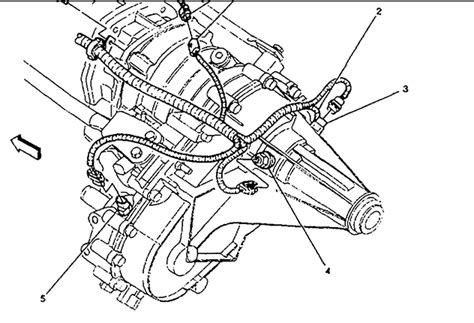How Does A 4x4 Vacuum Actuator Work
Ronan Farrow
Apr 04, 2025 · 3 min read

Table of Contents
How Does a 4x4 Vacuum Actuator Work?
A 4x4 vacuum actuator is a mechanical device that uses vacuum pressure to generate linear motion. Understanding how it operates involves grasping the core principles of vacuum technology and its application in this specific actuator type. This guide will break down the workings of a 4x4 vacuum actuator, explaining its components and functionality.
Understanding the Basics: Vacuum and Linear Motion
Before diving into the specifics of a 4x4 actuator, let's establish a fundamental understanding. A vacuum is a space devoid of matter. Creating a vacuum within a sealed system generates a pressure difference compared to the surrounding atmosphere. This pressure difference is the driving force behind the actuator's movement.
Linear motion, simply put, is movement in a straight line. In a vacuum actuator, this linear motion is achieved by utilizing the pressure difference to move a piston or similar component.
The Components of a 4x4 Vacuum Actuator
A 4x4 vacuum actuator, unlike its simpler counterparts, usually implies a more robust design capable of handling heavier loads or providing greater force. Key components often include:
1. The Vacuum Source:
This is the system that generates the vacuum. Common vacuum sources include:
- Vacuum Pumps: Electrically or pneumatically driven pumps creating a vacuum by removing air from a sealed system.
- Venturi Systems: These use the principle of Bernoulli's equation to generate a vacuum by accelerating airflow.
2. The Actuator Housing:
A sturdy housing encloses the internal components, providing structural integrity and sealing the vacuum system. The housing also typically includes mounting points for integration into other machinery.
3. The Piston or Diaphragm:
This is the moving part of the actuator. A piston is a cylindrical component that moves within a cylinder. A diaphragm is a flexible membrane that moves due to pressure changes. This component directly converts the vacuum pressure into linear motion.
4. The Seals:
Proper sealing is crucial to maintain the vacuum. Seals prevent air leakage, ensuring efficient operation and preventing performance degradation. Common seal materials include rubber, silicone, and polyurethane.
5. The Control Valve:
This allows for controlled application and release of the vacuum pressure. This valve dictates when the actuator extends and retracts, allowing for precise control over the linear motion.
How it Works: Step-by-Step
- Vacuum Creation: The vacuum source creates a vacuum in the actuator's chamber.
- Pressure Difference: A significant pressure difference is created between the vacuum within the chamber and the atmospheric pressure outside.
- Piston Movement: This pressure differential acts upon the piston (or diaphragm), causing it to move linearly. The "4x4" aspect usually refers to a robust construction that facilitates greater force and potentially a larger stroke length.
- Linear Motion: The linear movement of the piston translates into mechanical work, such as pushing or pulling a load.
- Vacuum Release: Releasing the vacuum by venting air into the chamber allows the piston to return to its original position, or a spring mechanism may be used for the return stroke.
Applications of 4x4 Vacuum Actuators
The robust nature of 4x4 actuators makes them suitable for demanding applications such as:
- Industrial Automation: Heavy-duty machinery and automated systems.
- Robotics: Precise and powerful movement of robotic components.
- Material Handling: Applications involving moving or positioning heavy objects.
By understanding the components and operating principles described above, you can better appreciate the capabilities and limitations of a 4x4 vacuum actuator. Its simple yet effective design makes it a valuable component in various industrial and mechanical applications.
Featured Posts
Also read the following articles
| Article Title | Date |
|---|---|
| How Do Wired Security Cameras Get Power | Apr 04, 2025 |
| How Do You Say Happy Slava In Serbian | Apr 04, 2025 |
| How Do You Get A Genetic Methylation Test | Apr 04, 2025 |
| How Do I Dispose Of A Dehumidifier Near Me | Apr 04, 2025 |
| How Fast Does A 90hp Pontoon Boat Go | Apr 04, 2025 |
Latest Posts
Thank you for visiting our website which covers about How Does A 4x4 Vacuum Actuator Work . We hope the information provided has been useful to you. Feel free to contact us if you have any questions or need further assistance. See you next time and don't miss to bookmark.
